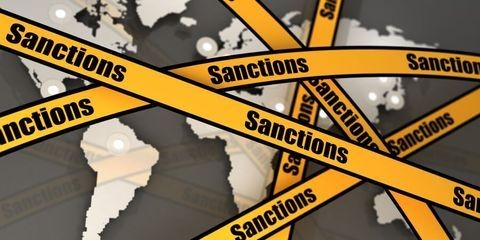New York State Employers Must Implement Their HERO Act Plans
Client Alert | 3 min read | 09.21.21
New York Governor Kathy Hochul announced on September 6, 2021, that the New York State Commissioner of Health has designated COVID-19 as a “highly contagious communicable disease that presents a serious risk of harm to the public health” under the New York State Health and Essential Rights Act (“HERO Act”). Most employers in New York State must now promptly implement their airborne infectious disease exposure prevention plan (“Plan”) to ensure compliance. The New York State Department of Labor, as provided in the NY HERO Act Exposure Prevention Standard, has taken the position that employees and employers within the coverage of the Occupational Safety and Health Administration’s (“OSHA”) COVID-19 Healthcare Emergency Temporary Standard are not covered by these HERO Act mandates.
Covered employers were recently required to provide each employee in a New York State work site with a copy of their Plan in English or in the language identified as the primary language of such employee, if available, post a copy in a visible and prominent location within each New York State work site, and ensure that a copy of the Plan is accessible to employees during all work shifts. Based on this designation, pursuant to the Airborne Infectious Disease Exposure Prevention Standard, now an Emergency Regulation and proposed Final Regulation (“Standard”), employers must take the following actions in connection with their work sites in New York State:
- Immediately review their Plan and update it, if necessary, to ensure that it incorporates current information, guidance, and mandatory requirements;
- Finalize and promptly activate the Plan;
- Provide employees a verbal review of their policies, employee rights under the applicable provisions of the HERO Act and the Plan. Such verbal review must be provided in a manner most suitable for the prevention of an airborne infectious disease, whether in person in a well-ventilated environment with appropriate face masks or personal protective equipment, or via audio or video conference technology, and
- Designate one or more supervisory employees to enforce compliance with the Plan, the Standard and any other federal, state, or local guidance related to preventing the spread of the airborne infectious disease as applicable to employees and third parties within the workplace.
Employers must provide employees with a copy of their Plan within 30 days after adoption. As Gov. Hochul’s COVID-19 designation went into effect on September 6, employers should distribute by October 6, 2021.
While this designation by the Commissioner of Health remains in effect, employers must ensure that the Plan for each work site in New York State is “effectively followed” by:
- Assigning enforcement responsibilities to one or more supervisory employees;
- Monitoring and maintaining exposure controls, and
- Regularly checking for updated information and guidance provided by New York State Department of Health and the Centers for Disease Control and Prevention concerning the airborne infectious disease and updating their Plan when necessary.
While employers are confronting the continued threats of the delta variant of COVID-19, they should be mindful of recent developments such as President Biden’s comprehensive, six-part strategy to combat COVID-19, as addressed in our prior alert, along with other COVID-19 related requirements such as COVID-19 related paid sick and vaccination leaves.
Contacts
Insights
Client Alert | 14 min read | 05.03.24
On April 24, 2024, President Biden signed into law the National Security Supplemental fiscal package, which includes significant new sanctions and export controls authorities. Although the U.S. foreign aid commitments for Ukraine, Israel, and Taiwan headline the new law, it also (1) expands the statute of limitations for U.S. sanctions violations; (2) includes new authorities for the President to coordinate sanctions efforts with the European Union and the United Kingdom; (3) expands sanctions and export controls on Iran (including some targeted at Chinese financial institutions); and (4) includes new sanctions authorities targeting terror groups.
Client Alert | 3 min read | 05.03.24
EEOC’s New “Enforcement Guidance on Harassment in the Workplace” Hits Hot-Button Issues
Client Alert | 11 min read | 05.03.24
FDA Moves Forward on Laboratory Developed Tests while Stakeholders and Congress Weigh Next Steps
Client Alert | 1 min read | 05.03.24







